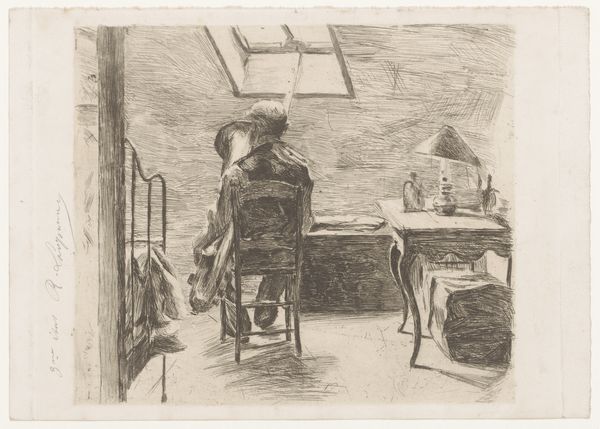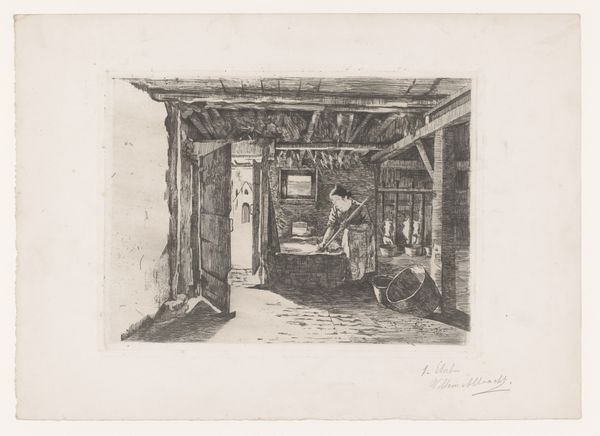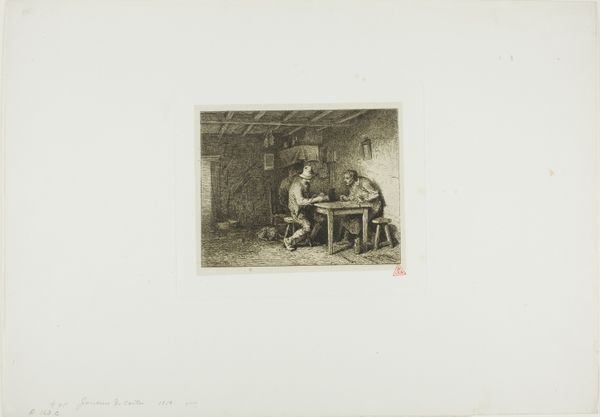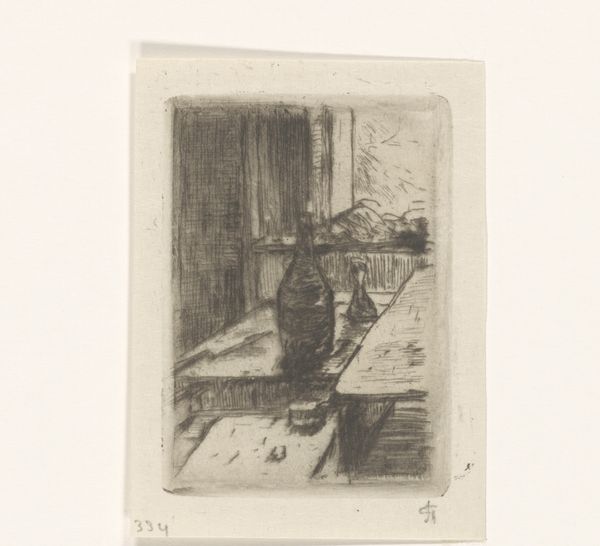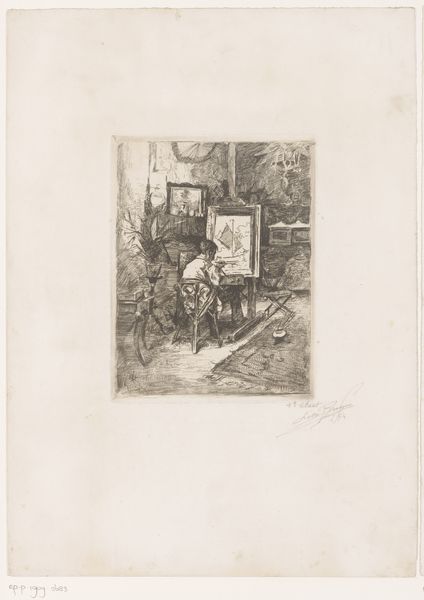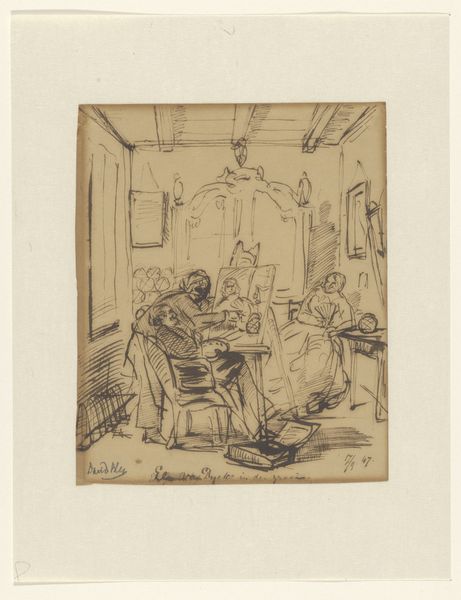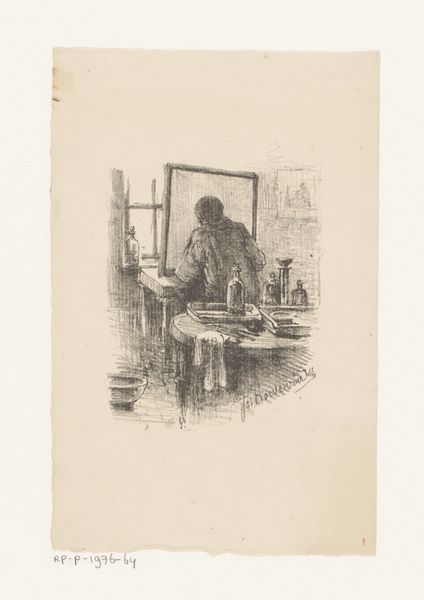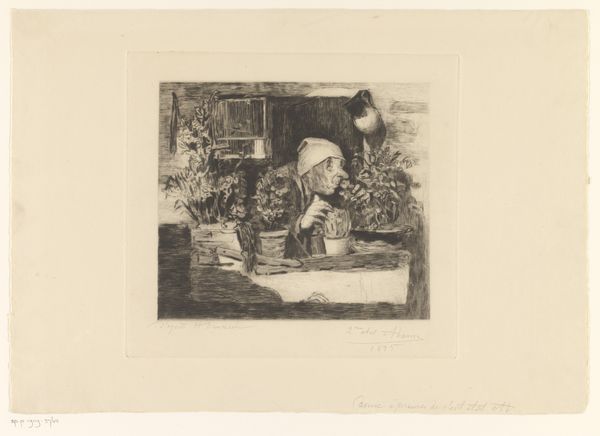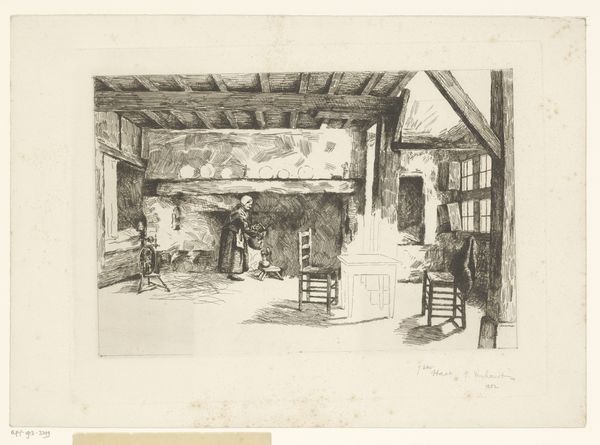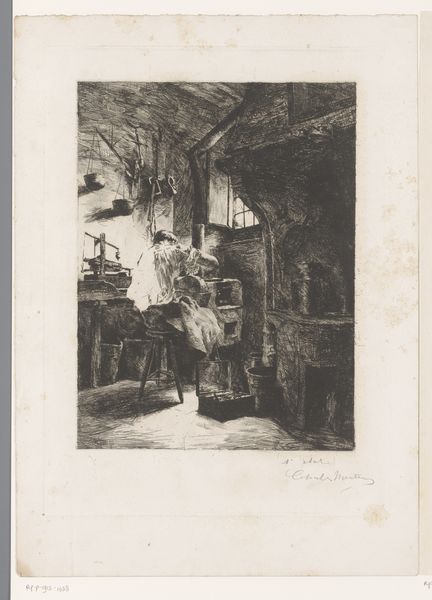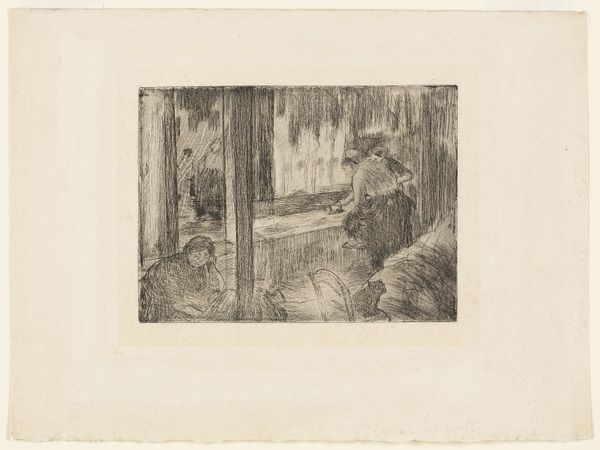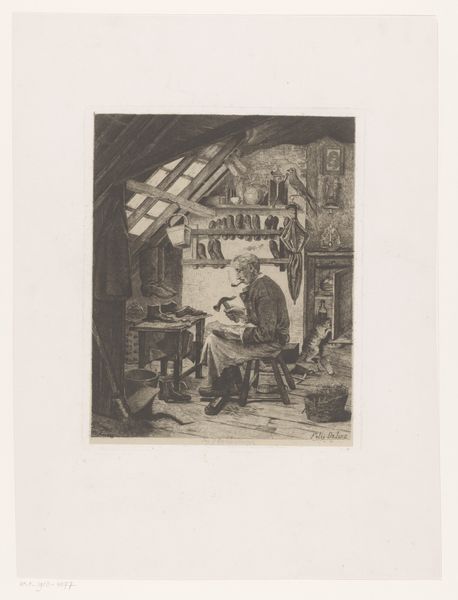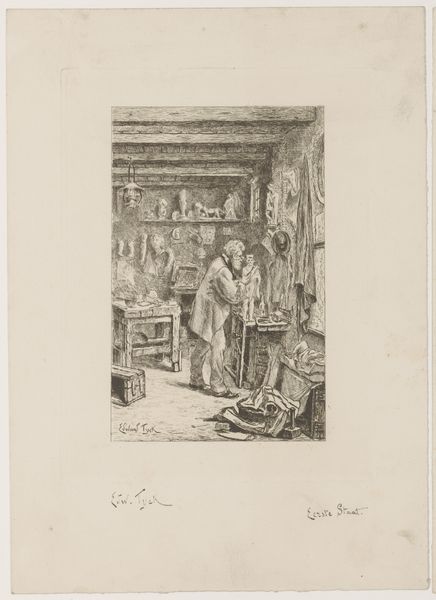
drawing, paper, ink, pencil
#
portrait
#
drawing
#
aged paper
#
light pencil work
#
quirky sketch
#
pencil sketch
#
sketch book
#
paper
#
personal sketchbook
#
ink
#
sketchwork
#
pen-ink sketch
#
pencil
#
sketchbook drawing
#
genre-painting
#
sketchbook art
#
realism
Dimensions: height 197 mm, width 250 mm
Copyright: Rijks Museum: Open Domain
Editor: So, here we have "Tubaspeler op een zolderkamer," or "Tuba Player in an Attic Room," from 1890. It looks like a drawing done with pencil and ink. It feels very intimate, like a glimpse into someone's private world, maybe a little melancholy too. What do you see in this piece? Curator: I see a fascinating portrayal of working-class life and the artist's potential commentary on labor, leisure, and social mobility. Consider the figure – back turned, almost anonymous, defined by his instrument, isolated within this cramped attic space. Editor: Isolated, yes. What does that isolation suggest? Curator: Think about the social and political climate of 1890. The rise of industrial capitalism created both opportunities and profound inequalities. Was this tuba player afforded the same access to upward mobility as other members of society? Is he toiling away in obscurity? The setting speaks volumes. The attic room, likely a rented space, suggests a transient existence, perhaps indicative of the economic struggles many faced. Editor: So the tuba, then, becomes more than just an instrument; it represents his livelihood, his identity within that struggle? Curator: Exactly. And consider the gaze. The artist asks us to witness, to reflect upon the individual experience within a broader societal framework. Who has access and visibility? Editor: It definitely makes me rethink my initial interpretation of melancholy, and more as social commentary. Thanks! Curator: It's a great image for considering how art serves as a potent form of social documentation. I'll be taking notes on the potential of music for solidarity within similar groups!
Comments
No comments
Be the first to comment and join the conversation on the ultimate creative platform.
